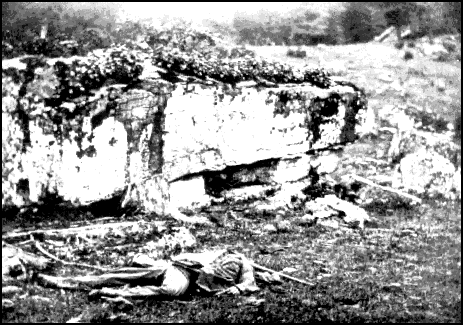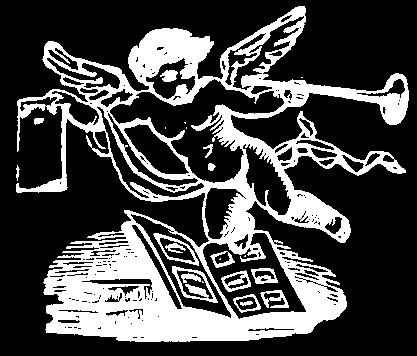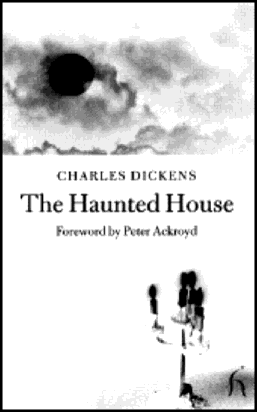Understanding
The Great War
Stéphane Audoin-Rouzeau,
Annette Becker
Catherine Temerson, Translator
(Hill and Wang)

To get a measure of the extent of the first circle of mourning in Europe, one should begin with the number of widows and orphans. There were 525,000 war widows in Germany in 1920, 200,000 in Italy; 600,000 in France; 240,000 in Great Britain. On the assumption that 30 per cent of the men killed in the Great War left widows behind, this comes to about 3 million women for the belligerent parties as a whole. (There were more than 1 million orphans in Germany, at least 760,000 in France, 350,000 each in Great Britain and Romania and 300,000 in Italy.) If you count an average of two children per widow, as Jay Winter does, you arrive at a total of 6 million orphans.
One of the problems historians faced (as did those who wanted to commemorate the war) was the impossibility of showing the hideousness of static, trench warfare. In the German monuments, "Their stances are brave, even swaggering, because it is known that they were heroic, even if they lost the war ... Their war is sanitized. No mud, no lice, no blood: they are as clean as toy soldiers, operetta soldiers playing and replaying the part that was theirs."
The historian John Keegan reports,
I constantly recall the look of disgust that passed over the face of a highly distinguished curator of one of the greatest collections of arms and armour in the world when I casually remarked to him that a common type of debris removed from the flesh of wounded men by surgeons in the gunpowder age was broken bone and teeth from neighbours in the ranks. He had simply never considered what was the effect of the weapons about which he knew so much, as artifacts, on the bodies of the soldiers who used them.
14 - 18 is a compelling history that comes at it from another point of view: the sheer suffering of the humans who got entangled in it, not only the military, but those in Belgium, Holland and Northern France who had to live under German occupation for almost four years, and, as well, those in the home countries who paid the price for this monster, the sheer personal cost of what they were wont to call "The War to End All Wars."
There is a mountain of information here, not about the generals or the armies taken as a whole, but the individuals: --- quotes from letters, fragments, reading of memorials, historical documents, but always returning to the human scale of it. And then there are the surprising facts:
- Even after the facts of trench warfare were well known, volunteers continued to appear on the doorsteps of the recruitment centers. After the worst battle at the Somme --- 1 July 1916, 20,000 men from Britain and the dominions killed, 40,000 wounded --- the numbers of new volunteers remained high.
- On "battle fatigue:" an American study during the next world war found that
after thirty-five days of uninterrupted combat, 98 percent [of the soldiers] manifested psychiatric disturbances in varying degrees.
- More than half of the 70 million soldiers engaged in the Great War suffered physically or psychologically from its violence, whether it killed them or 'only' wounded them.
- One French propaganda piece stated that Germans urinated through their feet:
the enemy's basic evilness explained their abnormally abundant defecation, in turn with the emission of a bodily odor in their sweat comparable to a polecat.
- Concentration Camps were invented by the Spanish, during the Cuban war of 1896-7. General Weyler
combined pillage and the systematic destruction of property and cultures with what he called the "re-concentration" of civilians, and he caused thousands of deaths.
The British used the same techniques during the Boer War.
- The streets of Germany during the Weimar Republic became extensions of the trenches in which soldiers had lived and died from 1914 to 1918: ex-soldiers from the political left and right battled each other continuously. And finally,
- "Culturally, the war was a total war from the very beginning."
18 Fairy Tales
Bret Fetzer
(Rampart Books)

Certainly religion --- that magic potion that served as our fairy-tale guide for centuries --- has been transformed into The Just War and The New Puritanism, both are as scary in their ways as the witch hunts of three-
Fetzer tells of scorpions who fall in love, rats who do noble services for those in trouble, wise ferrets, "clever and learned" termites, maggots with baby faces, fish who punish humans who eat fish, and intelligent pigs. All the creepy-crawly or stinky creatures of the earth become the heroes in Petals and Thorns, do noble service to those who give them a chance and punish those who do wrong.
That's the heart of the fairy tale, is it not? Unlikely creatures endowed with the power to bring justice and love to those who don't have it, to give pain to those who deserve it --- and thus right the wrongs of the world.
"My appearance may be humble" says the rat, "but my heart is all the more steadfast. Give me a chance, and perhaps one day you will honor my devotion." And because he eats books, he delivers "a poem so exquisite that all who read it can think of nothing for the rest of their happy lives." His very weakness --- being an insatiable gnawing rat who gets transformed by a world that rewards the kindly --- serves to destroy those who are greedy and cruel.
We want those who run our lives --- mothers, fathers, bureaucrats, popes, presidents, pashas --- to reward us for our goodness. We want them to punish those who are heartless. In a fairy tale, by contrast, we look to the lesser creatures inhabiting the secret places to be the bearer of magic and hope.
The rape of our children's innocence --- carefully constructed by television, along with our war games and the surfeit of consumer Things has taken the honored fairy tale to its ultimate perversion. Fortunately, there are the likes of Fetzer to remind us of the fun and quiet wit that lay under the best of these echoes out of our innocent past.
Haunted
House
Charles Dickens
(Hesperus)

One is immediately struck by his originality, his sense of fun, the pleasure of writing that drove him but, unfortunately, didn't work for his friends with the exception of Collins. Adelaide Anne Proctor comes up with a doggerel tale about Sister Angela, who had known
No home, no love, no kindred, save their own ---
An orphan, to their tender nursing given,
Child, plaything, pupil, now the bride of heaven.
And she it was who trimmed the lamp's red light
That swung before the altar, day and night.
Wilkie Collins, on the other hand, pens a suitably gripping tale of a man captured by pirates who is then condemned to death by being bound and placed in a room with a candle which, once it burns down to a fuse, will blow up him and the stolen ship.
It is mostly Dickens, though, who lights up the pages, a writer who with a few sentences can capture us by his caricatures --- in this case, the people our narrator meets on his journey to the country for his health. On the train, in the opposite seat, there is a man "who had several legs too many, and all of them too long." Once in the village, Dickens delivers this perfect description of the country bumpkin they call Ikey,
A high-shouldered young fellow, with a round red face, a short crop of sandy hair, a very broad humorous mouth, a turned-up nose, and a great sleeved waistcoat of purple bars with mother-of-pearl buttons, that seemed to be growing upon him, and to be in a fair way --- if it were not pruned --- of covering his head and overrunning his boots.
Dickens style should remind us of what a great movie-maker he was, in the time long before movies. With a few quick shots, he is able to convey the whole of a person, as wonderfully well as Alfred Hitchcock, Mike Nicholls, or Charlie Chaplin. Too, the plot of a short short story must come together promptly and Dickens could hammer one together in a trice.
Hesperus specializes in short volumes of rare and unknown works by (usually) well-known authors. Recent editions have included Dante's prose-poem "New Life," Balzac's early novelette Colonel Chabert, Katherine Mansfield's first published work, In A German Pension, Hawthorne's "Rappaccini's Daughter," and Pushkin's Dubrovsky. Many of these slim volumes contain a bonus: the Hawthorne book also includes "Young Goodman Brown" and "A Select Party" and Pushkin's volume includes the fragment entitled "Egyptian Nights." All these works have appropriate notes, and all have an instructive, enlightening, or sometimes a misguided introduction to smooth the way for the reader.
In the latter category, we have Ackroyd's brief but screwy discussion of Dickens' three stories that are included here. Obviously hard-up for something to say (or maybe, just in a hurry --- he is a busy writer), Ackroyd decides that the first story, "The Mortals in the House," shows "the melancholy of Dickens himself ... striated with images of death and unconsciousness." This sounds to me like the perfect description of this or any other ghost story.
In addition, Ackroyd waxes wroth over one of the tales, "The Ghost of Master B.'s Bedroom" which he says, "this tale evinces [Dickens'] profound interest in infantile sexuality."
The story concerns a 'seraglio' or harem of eight small girls who become the slaves and devotees of the small boy who is the narrator. It is all in the worst possible taste, and smacks of mid-Victorian sentimentality at its most insidious, but it is curious and instructive nonetheless.
At times like this, we are not so sure that the story printed here by Hesperus is the same one that Ackroyd has read. "The Ghost of Master B.'s Bedroom" is a rather mild saga employing the ghost of a young boy. It is, if Ackroyd had spent some time in study of it and its genre, a parody of the many Scherazade - Ali Baba and the 40 Thieves- type stories so popular as children's books in mid-19th Century England, brought to their not-so-child-like fruition by none other than Sir Richard Burton.